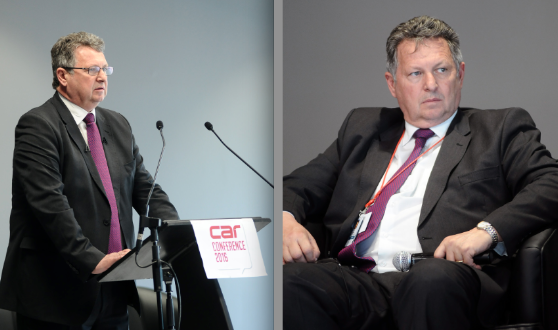The President of National Association of Automobile Manufacturers of South Africa (NAAMSA) and Managing Director of the Nissan Group of Africa, Mike Whitfield, has painted an encouraging picture of the future of the South African motor industry.
Maintaining that there were also opportunities, including viable automotive assembly sectors, inter-regional trade, self-sustainability and an entry into the global automotive industry, Whitfield said for the SA motor industry to flourish until 2020 and beyond, it was vital that all the players moved with the times in terms of innovation, new thinking, finding creative solutions and different ways of doing things.
Whitfield expressed the optimism in his keynote address at the CAR Conference, an important biennial motor industry conference, which was co-located with the just-concluded SA Festival of Motoring at Kyalami, near Johannesburg.
The NAAMSA President, who spoke on the topic, titled “The automotive industry in 2020 and beyond; moving with the times,’ also gave an insight into the industry in Africa following a recent visit to Nigeria as a member of a delegation from the African Association of Automotive Manufacturers (AAAM).
Stressing the importance of the local motor industry’s contribution to SA’s overall economy where it accounts for 7.5% of GDP and a massive 33.5% of the country’s manufacturing output, Whitfield said the business environment currently was both tough and complex, with macro-economic factors such as high interest rates, a weak rand and ongoing fluctuations in the fuel price.
He disclosed that although SA now ranks 21st in the world in terms of annual vehicle production, this figure of 650 000 units manufactured locally last year accounts for only 0,7% of total global output, saying the industry objective is to lift this to 1% by 2020.
Other major influencers affecting the industry, according to Whitfield, were rapid advances in technology, new players in the automotive industry, such as Uber, Google and Tesla, as well as changing consumer behavioural patterns.
“Fortunately we enjoy ongoing support and stimulation from the Department of Trade and Industry (DTI), highlighted by the Automotive Production and Development Programme (APDP), which runs to 2020, and its predecessor, the Motor Industry Development Programme (MIDP), both of which has contributed to the local motor industry’s growing international competitiveness.
“These programmes have resulted in huge amounts of capital investment over the years, including R24-billion between 2011 and 2015, with R7.6-billion slated for investment this year,” Whitfield said, adding “The focus on efficiencies has also resulted in the number of vehicle platforms manufactured in South Africa being slashed from 42 in 1966 to only 12 in 2016.”
Already the DTI has appointed a technical team to assist in the development of a post 2020 master plan aimed at ensuring the long-term sustainability of the industry in terms of policy and support mechanisms. Other objectives are to increase investment, production and exports while creating more job opportunities.
Whitfield focused on Nissan’s extensive involvement in the development of electric vehicles as a form of alternative source of power when discussing the rapidly changing landscape in terms of vehicle technology.
He said though the take up of electric vehicles has been slow in SA , the expanding network of charging stations being established jointly by Nissan and BMW will increase sales of these vehicles in the future.
Whitfield also presented some interesting views on the growth of alternative mobility options with changing vehicle ownership patterns, shrinking dealerships, virtual sales, an emphasis on low cost fleet servicing and the ongoing development of mobility technology by the OEMs.
Whitfield, who is also the Vice Chairman of AAAM made interesting observations about the situation of the motor industry in the rest of Africa, saying there were challenges in terms of unclear automotive policies, high levels of ownership of vehicles by fleets, strong used car markets together with large numbers of so-called grey imports, while finance to purchase vehicles was a major stumbling block due to the high interest rates charged.
 ..:: AUTO REPORT AFRICA ::..
..:: AUTO REPORT AFRICA ::..




